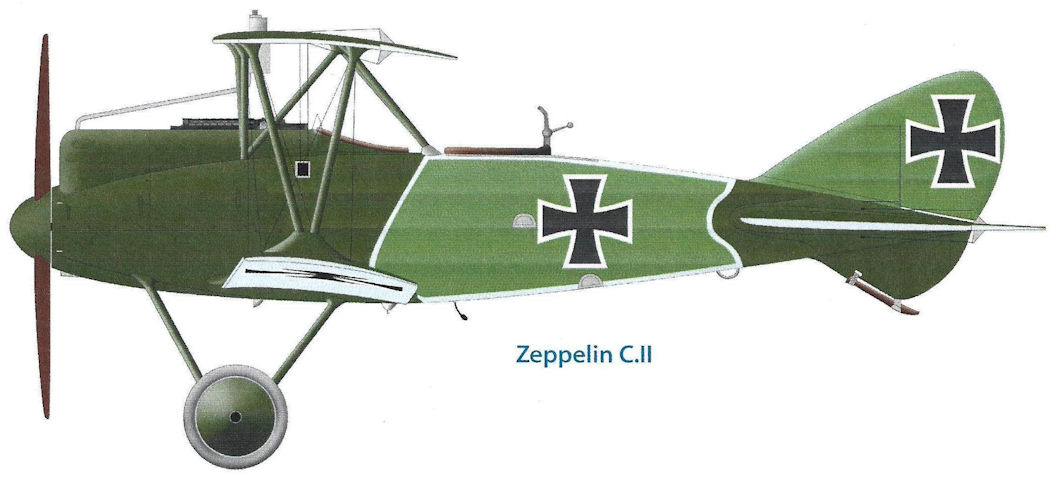O.Thetford, P.Gray German Aircraft of the First World War (Putnam)
Zeppelin C I and C II (Ja)
These two two-seaters were designed by Paul Jaray and constructed at the Zeppelin airship factory at Friedrichshafen during the autumn of 1917. Only two C Is were built. These were wooden machines with fabric covering. The C II was virtually the same aircraft, except that the balances on the tail surfaces were dispensed with and now constructed with a metal frame. Six were completed during the winter of 1917-18. Twenty C IIs had been completed by the Armistice, and their destruction was ordered by the Allied Control Commission, but their sale to Switzerland was tacitly permitted. They were flown by the Swiss Air Force until 1928 and were well liked by their crews.
Engine, 240 h.p. Maybach Mb IV. Span, 120 m. (39 ft. 4 1/2 in.). Length, 7,925 m. (26 ft. 0 in.). Height, 3.585 m. (11 ft. 9 in.). Weights: Empty, 987.5 kg. (2,173 lb.). Loaded, 1,455 kg. (3,201 lb.). Speed ca. 200 km.hr. (125 m.p.h.). Climb to 5.000 m. (16,400 ft.) in 33 min.
M.Schmeelke Zeppelin-Lindau Aircraft of WW1 (A Centennial Perspective on Great War Airplanes 42)
Zeppelin (Ja) C.I / C.II
Due to the imminent reduction in airship orders beginning in 1917, Luftschiffbau Zeppelin management had to search for new products in order to utilize the company's full production capacity. In 1918, the Zeppelin company employed 11,500 workers in Friedrichshafen. The danger was that should these well-educated specialist workers be underemployed, they would he reassigned to the military or other companies, or simply leave. Some of this could be compensated by shifting workers to other operations; for example, the LZ foundry began to cast crankcases for the Maybach Motorenbau Mb IVa engine, or to the Lindau factory. In addition, Colsman planned an expansion of the aircraft business.
Two subsidiaries of LZ, the ZWL and the aircraft hangar in Staaken, had already successfully established themselves. Now Colsman wanted LZ's Friedrichshafen hangar to take a larger role in producing aircraft for the army and navy.
In the summer of 1917, Colsman assigned LZ engineer Paul Jaray to design a C-Type for the air force. Jaray, who was born in Vienna, had studied mechanical engineering in Vienna and Prague. He came to Friedrichshafen in 1912 as one of the first specialists in aerodynamics - a topic that would interest him his entire life. In 1914 he moved to LZ, where he participated in the construction of various airships, and could spend time intensely researching aerodynamics.
On June 30th, 1917, Paul Jaray began development of the Zeppelin C.I, a two-seater high-altitude surveillance aircraft. Within 14 days he had drafted a blueprint of a prototype. This two-seater biplane "showed the most consequential consideration of all new regulations to achieve most economical flight", as it was explained in the craft's description. In addition,
“[...] its use as a military and a passenger aircraft employs all of the characteristics of modern aircraft - speed, excellent climbing characteristics, comfortable, light handling, maneuverability, gliding potential, good visibility, and extraordinary safety with significant elasticity of the shock-absorbing parts. From the standpoint of aerodynamics and stability, the design is a fortunate combination of all the current aviation construction and light metal expertise. As a result, the overall value of this type (but also of its parts) is a leader among current aircraft. ”
The advertising and technical department of LZ did not exaggerate here. The Zeppelin-Jaray C-aircraft did indeed show extraordinary technical parameters for 1917, such as an altitude ceiling of 8,000 meters and a top speed of 210 kilometers per hour. The aircraft owed its speed to Jaray's aerodynamics research, which flowed into its design. On August 18th 1917, 30 workers began building the Zeppelin (Ja) C.I. However, the first two pre-serial construction fuselages in the hangar were made of wood. This two-seater biplane with a wingspan of 12 meters and a fuselage length of 6.9 meters was powered buy a 260 HP Maybach Mb IVa engine.
The fuselage, referred to internally as "Aircraft 1", was covered in wood veneer. Only Aircraft 2 was given fabric coverings over openings on the sides and top of the fuselage. In addition to the lower weight, these openings could be used as maintenance access for the fuselage. This was surely also changed on Aircraft 1 later. Since these two aircraft were primarily used for LZ's testing purposes, various cooling systems, exhaust collectors, and propellers were tested out on them. In addition, clear Cellon was tested on the upper wing to increase the pilot's upward visibility. Since these pre-serial aircraft carried no official designation, they cannot be tracked.
The wing and tail constructions, spars, ribs, and rudders of the prototypes were already made of duraluminum, which was produced at the ZWL in Reutin, and covered with fabric as was the usual case at the time. On October 17th, 1917, in a record time of two months, the Zeppelin (Ja) C.I took off for its maiden flight in Lowental. The company pilot Hausmann was satisfied with the fight characteristics, and with an operating weight of 1,500 kg (empty weight 1,000 kg) the C.I reached a top speed of 210 kilometers per hour. In the following days, Hausmann made several more test flights, focusing on the maneuverability of the aircraft as well as dives and spins.
At the same time the wooden aircraft were being constructed in the hangars of the LZ, Dornier's engineers in Lindau began to work on transferring Jaray's plans to build a metal fuselage. The all-metal aircraft was designated C.II.
The LZ hangar in Friedrichshafen was not able to begin serial construction - it could only be done in collaboration with the ZWL in Lindau. Colsman therefore assigned additional workers from Luftschiffbau to ZWL.
On December 8th, 1917, Luftschiffbau Zeppelin GmbH received a binding order for six test C-aircraft, three each of ZWL C.I and Zeppelin C.II, from IdFlieg's flight master:
“Subject: Delivery of test aircraft.
With the approval of the war ministry dated November 23rd, 1917, I issue the company with the order of the delivery of 3 - three - pieces test C-aircraft for 160 HP Mercedes engines and 3 - three - pieces test C-aircraft for 260 HP Maybach engines.
With complete accessories for aircraft and power plants, as well as installation of MGs.
The aircraft will carry the military designations C 15800 through 15805/17.
The installation of F.T. (??) - or photography equipment, the installation of the MG, the delivery of shell feeding equipment is included in the price. ”
On December 14th, 1917, LZ answered with the following letter:
“We confirm with thanks the receipt of the order to deliver 3 test C-aircraft with 260 HP Maybach engines. The confirmation of the 3 test C-aircraft with 160 HP Mercedes engines will follow from our Zeppelin Factory in Lindau. For the three test aircraft with 260 HP Maybach engines, we have noted the military designations of 15803/17, 15804/17 and 15805/17. We will assume delivery dates for the light metal aircraft of early, mid-, and end-February 1918.”
The partial assembly of the Zepp. (Ja) C.II military numbers 15803 through 15805/17 made of aluminum took place in Lindau Reutin. According to the description, the "fuselage was made of a duraluminum lattice. In the engine area as a rotation paraboloid towards the rear in a square cross-section with lightly curved side walls.
The wings, top 12 meters, bottom 11.6 meters (divided by the fuselage) were made of two duraluminum spars each, with riveted ribs, also of duraluminum. The elevator and the rudder as well as the tail skid were also of duraluminum.”
The construction description says that the engine was a Maybach Mb IVa engine, with LZ cooling system and Jaray propeller (LZ-Pi 61/62). The C.II (Ja) had a special starter that allowed the engine to start without external help. In anticipation of its use as a civilian aircraft as well, the surveillance seat as well as the MG mount could be replaced with a comfortable passenger seat.
All of the parts for Dornier's first serially produced aircraft were completed in Lindau-Reutin by March 1918. The assembly and fabric covering took place in Friedrichshafen at LZ. Less than five months after the prototype's first flight, on March 10th, 1918, the aircraft was flown in Lowental. On March 11th, 1918, IdFlieg approved and accepted it. An order for 20 combat-ready trial aircraft, with the military designations of C.5500 through 5519/18 followed. These aircraft were completed by the end of November at ZWL and LZ. Internally, the C.II airplanes were sequentially numbered (C.II/1 through C.II/20). But none of these made it to combat. C.II/2 was used as a test aircraft in Adlershof, and C.II/4 burst into flames upon landing at the Lilienthal airfield in Berlin.
In 1920, LZ purchased back the remaining aircraft from the German Army Peace Commission of the Weimar Republic. Through a mediator, 20 Zeppelin (Ja) C.II were sold to the Swiss Air Force, where they remained in service until October 1927. That means that at least three more Zeppelin (Ja) C.II were built before the construction ban as dictated by the Treaty of Versailles was instituted.
Three airplanes of Paul Jaray's final design, the Zeppelin C.IV, were also built: Military designations 12255 through 12257/18. The last remaining aircraft of this type, with the internal company number 01, was destroyed in a fire as a result of welding work in a hangar at the aviation museum at Le Bourget near Paris on May 17th, 1990.
Camouflage Painting of the Zeppelin (Ja) C.I / C.II
The Zeppelin Jaray prototype aircraft C.I and C.II received the usual airship fabric covering delivered by the company's own subsidiary Ballonhullengesellschaft mbH ("Balloon covering association") in Berlin Tempelhof.
For aerodynamic reasons, or for a smooth surface, the fabric had a protective covering of Cellon or stretching lacquer. It was mixed with iron oxide (1.5%) and aluminum powder (3%):
“[...] For the textile covering, one used varnished linen, which was sewn onto the ribs with a special technique. "
After the first two coats, it was smoothed by what was then called "glass paper", now known as sanding paper.
The duraluminum parts of the C.II, such as the engine cover, struts, and shafts, remained unpainted. The national emblems and other markings were applied according to the construction and delivery regulations of the army. Only the C.II series aircraft, which had the military designations 5500 through 5519/18, received the three-color camouflage coverings from the Ballonhullengesellschaft mbH.
Specifications of Zeppelin-Lindau Aircraft
Type Length, m Span, m Height, m Chord, m Propeller Manufact. Armament
(guns) Weight, kg Motor Crew
C.I 7.60 10.50 2.84 LZ-Jaray 1 fixed, 1 flex 696 Daimler D III 2
C.II 7.92 12.00 3.58 1.80 LZ-Jaray 1 fixed, 1 flex 1,000 Maybach Mb IVa 2
Military Numbers of Dornier-ZWL Aircraft
Military Designation Manufact. Type Class Engine Notes
15800-15802/17 ZWL (Do) C.I DIIIa
15803-15805/17 Zepp. C.II Mb IVa
5500-5519/18 C.II Mb IVa 20 aircraft sold to Switzerland
12255-12257/18 Zepp C.IV Last aircraft, burned in Paris 5/17/1990
P.Grosz, G.Haddow, P.Shiemer Austro-Hungarian Army Aircraft of World War One
Dornier Cl.II
On 27 August 1918, the LFT recommended the purchase of two Zeppelin C.II(Ja) reconnaissance biplanes, powered by 230 hp Hiero engines, for evaluation. The War Ministry approved the purchase in October. Designed by Ingenieur Paul Jaray, the Zeppelin C.II(Ja) was constructed of duraluminum and covered with fabric. Twenty had been ordered by the German Fliegertruppe. But after having visited the Zeppelin factory in September 1918, the LFT command changed its mind and replaced the Zeppelin C.II(Ja) by the Dornier Cl.II, which was regarded as a more modern design due to its all-metal, stressed-skin construction. At the cessation of hostilities, the contract for the purchase of two Dornier Cl.II biplanes was annulled. To prepare for all-metal aircraft manufacture in Austria, the Zeppelin Werke established a subsidiary in mid 191(?), in Horbranz near Bregenz, known as the Zeppelin Werke Oesterreich GmbH. No production was undertaken.
 |
M.Schmeelke - Zeppelin-Lindau Aircraft of WW1 /Centennial Perspective/ (42)
|
| Zeppelin C.II
|
 |
M.Schmeelke - Zeppelin-Lindau Aircraft of WW1 /Centennial Perspective/ (42)
|
| Zeppelin C.II 15803/17
|
 |
M.Schmeelke - Zeppelin-Lindau Aircraft of WW1 /Centennial Perspective/ (42)
|
Zeppelin C.II 5507/18 in provisional 'bubble' camouflage.
Unfortunately, the colors used in the Zeppelin C.II 'bubble' camouflage are not known, so we offer these possibilities.
|
 |
M.Schmeelke - Zeppelin-Lindau Aircraft of WW1 /Centennial Perspective/ (42)
|
Zeppelin C.II 5507/18 in provisional 'bubble' camouflage.
Unfortunately, the colors used in the Zeppelin C.II 'bubble' camouflage are not known, so we offer these possibilities.
|
 |
M.Schmeelke - Zeppelin-Lindau Aircraft of WW1 /Centennial Perspective/ (42)
|
Zeppelin C.II 5507/18 in provisional 'bubble' camouflage.
Unfortunately, the colors used in the Zeppelin C.II 'bubble' camouflage are not known, so we offer these possibilities.
|
 |
M.Schmeelke - Zeppelin-Lindau Aircraft of WW1 /Centennial Perspective/ (42)
|
| Zeppelin C.II 808 in Swiss service postwar
|
 |
M.Schmeelke - Zeppelin-Lindau Aircraft of WW1 /Centennial Perspective/ (42)
|
| Zeppelin C.II 811 in Swiss service postwar
|
 |
M.Schmeelke - Zeppelin-Lindau Aircraft of WW1 /Centennial Perspective/ (42)
|
| Zeppelin C.II 811 in Swiss service postwar
|
 |
M.Schmeelke - Zeppelin-Lindau Aircraft of WW1 /Centennial Perspective/ (42)
|
| The Zeppelin C.I aircraft number 1 in the LZ hangar in Friedrichshafen.
|
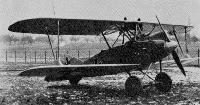 |
O.Thetford, P.Gray - German Aircraft of the First World War /Putnam/
|
| Zeppelin C I
|
 |
M.Schmeelke - Zeppelin-Lindau Aircraft of WW1 /Centennial Perspective/ (42)
|
| The Zeppelin C.II (C:15803/17) at the airfield in Lowental.
|
 |
M.Schmeelke - Zeppelin-Lindau Aircraft of WW1 /Centennial Perspective/ (42)
|
| Zeppelin C.II aircraft in German markings.
|
 |
M.Schmeelke - Zeppelin-Lindau Aircraft of WW1 /Centennial Perspective/ (42)
|
| Zeppelin C.II in German markings.
|
 |
M.Schmeelke - Zeppelin-Lindau Aircraft of WW1 /Centennial Perspective/ (42)
|
| Zeppelin C.II in German markings with extended exhaust.
|
 |
M.Schmeelke - Zeppelin-Lindau Aircraft of WW1 /Centennial Perspective/ (42)
|
| Zeppelin C.II in German markings.
|
 |
M.Schmeelke - Zeppelin-Lindau Aircraft of WW1 /Centennial Perspective/ (42)
|
| A Zeppelin C.II in German markings.
|
 |
P.Grosz, G.Haddow, P.Shiemer - Austro-Hungarian Army Aircraft of World War One /Flying Machines/
|
| Generalmajor Emil Uzelac (in white gloves and cape) and his staff visiting the Zeppelin factory at Friedrichshafen to inspect the Zeppelin C.II(Ja) in late September 1918. Designer Paul Jaray is second from left.
|
 |
M.Schmeelke - Zeppelin-Lindau Aircraft of WW1 /Centennial Perspective/ (42)
|
| View of a Zeppelin C.II in German markings. The aircraft has an extended exhaust.
|
 |
O.Thetford, P.Gray - German Aircraft of the First World War /Putnam/
|
| Zeppelin C II
|
 |
M.Schmeelke - Zeppelin-Lindau Aircraft of WW1 /Centennial Perspective/ (42)
|
| View of a Zeppelin C.II in German markings.
|
 |
M.Schmeelke - Zeppelin-Lindau Aircraft of WW1 /Centennial Perspective/ (42)
|
| Zeppelin C.II 5505/18 in 'bubble' camouflage in German service.
|
 |
M.Schmeelke - Zeppelin-Lindau Aircraft of WW1 /Centennial Perspective/ (42)
|
|
|
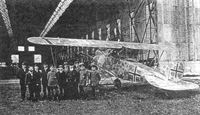 |
M.Schmeelke - Zeppelin-Lindau Aircraft of WW1 /Centennial Perspective/ (42)
|
| Zeppelin C.II in 'bubble' camouflage in German markings.
|
 |
M.Schmeelke - Zeppelin-Lindau Aircraft of WW1 /Centennial Perspective/ (42)
|
| Zeppelin C.II 5507/18 in 'bubble' camouflage heads a lineup of C.II aircraft under production.
|
 |
M.Schmeelke - Zeppelin-Lindau Aircraft of WW1 /Centennial Perspective/ (42)
|
The Zeppelin C.II aircraft at the airfield in Dubendorf. Serial No. 811 is visible with Hanriot H.D.1 fighters in the background.
The Swiss allocated serial Nos. 801 to 812, and 814 to 820 to the 20 C.II biplanes it received. According to J. Uresh in the official The Aircraft of the Swiss Air Force since 1914 (1975 Verlag Th. Gut & Co, Switzerland, 1974), the C.II biplanes were purchased clandestinely from the German authorities. They had never been flown and were transported in secret from Friedrichshafen to central Switzerland in 1920. In the middle of 1920, they were purchased by the Swiss military and taken to Dubendorf. The machine proved sturdy and were initially used for reconnaissance and high-altitude flying training. No. 816 crashed in October 1927, killing the crew. Metal fatigue was found to be the cause and the remaining aircraft were scrapped.
|
 |
M.Schmeelke - Zeppelin-Lindau Aircraft of WW1 /Centennial Perspective/ (42)
|
| Zeppelin C.II aircraft in Swiss service.
|
 |
M.Schmeelke - Zeppelin-Lindau Aircraft of WW1 /Centennial Perspective/ (42)
|
| Zeppelin C.II '808' in Swiss service. (Reinhard Zankl)
|
 |
M.Schmeelke - Zeppelin-Lindau Aircraft of WW1 /Centennial Perspective/ (42)
|
| Zeppelin C.II, perhaps '808', in Swiss service
|
 |
M.Schmeelke - Zeppelin-Lindau Aircraft of WW1 /Centennial Perspective/ (42)
|
| Zeppelin C.II, perhaps '808', in Swiss service
|
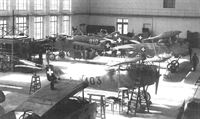 |
M.Schmeelke - Zeppelin-Lindau Aircraft of WW1 /Centennial Perspective/ (42)
|
| Zeppelin C.II aircraft in the Hangar at Dubendorf. The Zepp.C.II with the Swiss ID 807 and 810 are in for maintenance, on the left of the photo one can recognize the frame of a C.II without the fabric covering.
|
 |
M.Schmeelke - Zeppelin-Lindau Aircraft of WW1 /Centennial Perspective/ (42)
|
| Zeppelin C.II with the Swiss serial number 812 in flight.
|
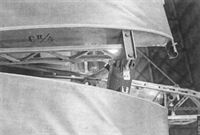 |
M.Schmeelke - Zeppelin-Lindau Aircraft of WW1 /Centennial Perspective/ (42)
|
| Closeup of the Zeppelin C.II structure.
|
 |
M.Schmeelke - Zeppelin-Lindau Aircraft of WW1 /Centennial Perspective/ (42)
|
| The wing of the Zeppelin C.II, military designation 15805/17, served for stress tests. Internally it was called aircraft number 4. The duraluminum structure of spars and ribs proved to be very stable.
|
 |
M.Schmeelke - Zeppelin-Lindau Aircraft of WW1 /Centennial Perspective/ (42)
|
| Uncovered structure of a Zeppelin C.II.
|
 |
M.Schmeelke - Zeppelin-Lindau Aircraft of WW1 /Centennial Perspective/ (42)
|
| Zeppelin C.II fuselage in storage at the Musee de l'Air in 1981 before fire destroyed the storage hangar where it was stored. It was originally obtained in 1921.
|
 |
M.Schmeelke - Zeppelin-Lindau Aircraft of WW1 /Centennial Perspective/ (42)
|
| Zeppelin C.II in German markings after a rough landing; the limited damage shows the robustness of the metal structure.
|
 |
M.Schmeelke - Zeppelin-Lindau Aircraft of WW1 /Centennial Perspective/ (42)
|
| Zeppelin C.II
|
 |
M.Schmeelke - Zeppelin-Lindau Aircraft of WW1 /Centennial Perspective/ (42)
|
| Zeppelin C.II
|
 |
M.Schmeelke - Zeppelin-Lindau Aircraft of WW1 /Centennial Perspective/ (42)
|
| Zeppelin C.II
|

